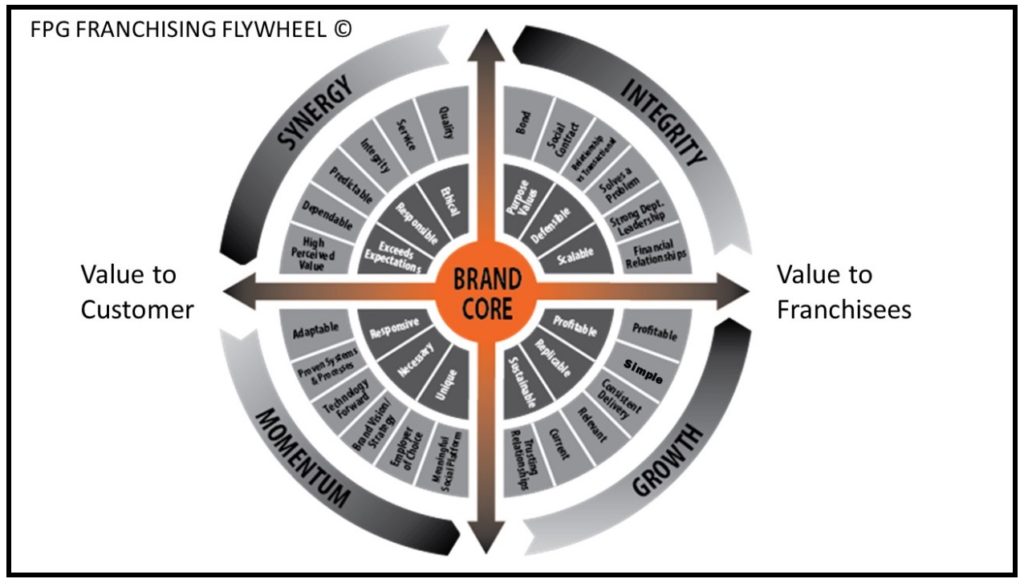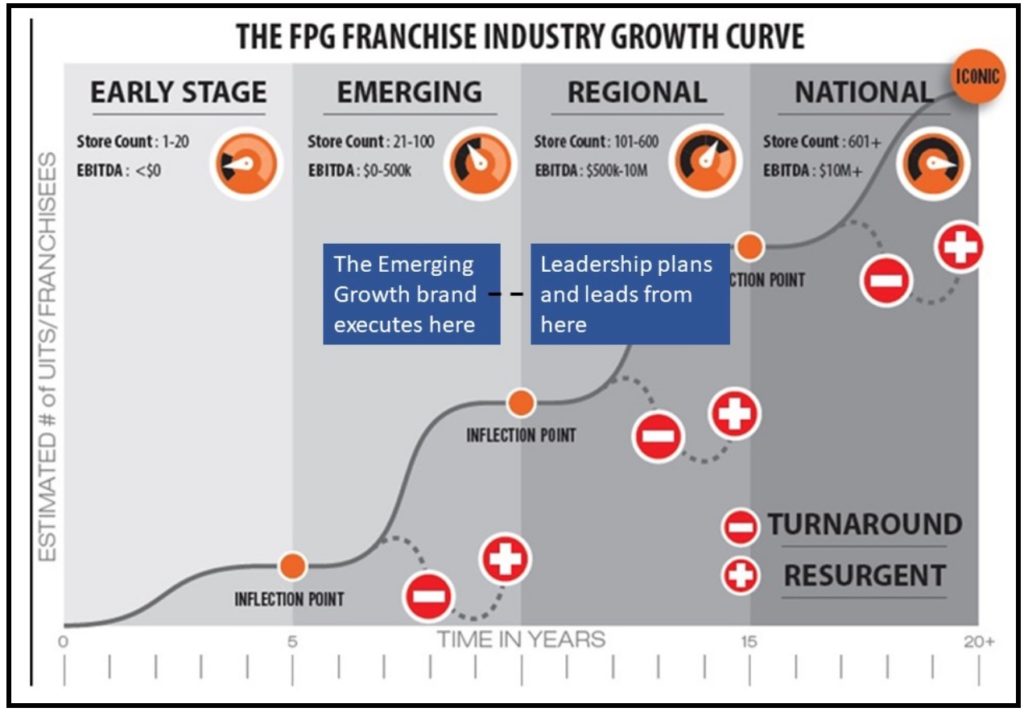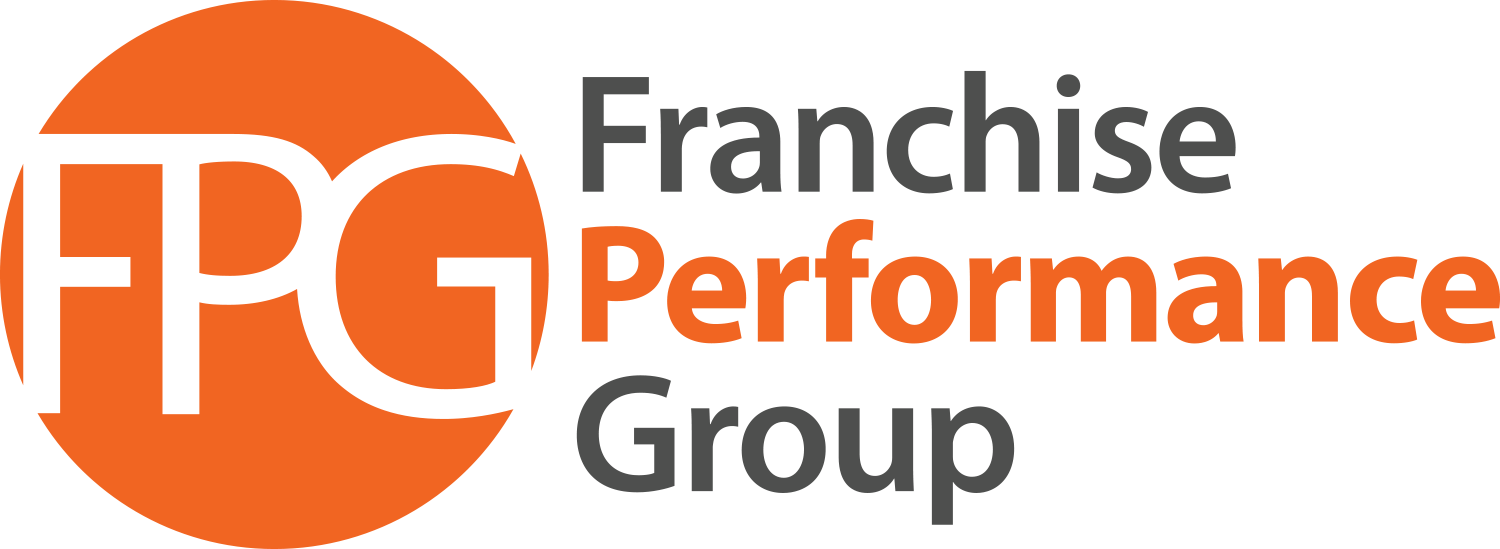
By Joe Mathews, CEO and Founder of Franchise Performance Group, Author of Street Smart Franchising
In our 30 years of experience in franchising, FPG has found that franchisor leadership tries to identify and solve their problems through “reductionism,” meaning they break the franchisor and franchisee model down into individual components and try to fix the problem by fixing the component. For instance, a franchisor may be experiencing franchisee-franchisor relationship issues, creating negative validation and killing franchisee recruitment results. The franchisor responds not by identifying and resolving these sources of conflict, but by creating a list of “good validators” versus “bad validators.” Then they direct recruiters to steer franchise candidates to “good validators,” as if the problem is now fixed and franchisee recruitment results will self-correct.
What do you think is the franchise candidate demand for a franchisor who ignores franchisee-franchisor relationship problems, accepts franchisee dissatisfaction as normal, has no corrective tactics in place, and responds by trying to trick more candidates into buying their business? Is this a strategy for long-term sustainability or a path towards an epic organizational breakdown? What is the franchise candidate demand for a franchise that is speeding gleefully towards a cliff, like the end of the movie Thelma and Louise?
In FPG’s experience, franchise brands seem to follow the tenet of Gestalt psychologist Kurt Koffka, who said, “The whole is different (or more) than the sum of its parts.” This means when you try to reduce a whole system (or in this case “the brand”) into what appears to be its separate and individual components, you risk losing understanding of the entire franchise ecosystem and brand dynamics.
It’s like trying to understand the cosmos by only studying atoms.
THE BRAND IS BIGGER THAN THE FRANCHISOR
In many ways, franchise brands are irreducibly complex. The brand components work together to create a sort of combustible rocket fuel that propels brands forward or, conversely, torches them where they stand. There is a synergistic positive or negative effect in franchising that happens when the brand’s drivers are either working or breaking.
Positively, the brand appears to take on a life of its own, propelled by its own head of steam beyond what the franchisor’s leadership team creates on their own. Conversely, brands may experience a series of breaks and enter a downward spiral, which in turn creates more breakdowns and self-inflicted headwinds, making it exponentially harder and costlier to turn the brand around.
Any executive who has been in franchising more than 10 years has experienced brand momentum or negative spirals and knows exactly what I am talking about, whether or not they had the words to describe it at the time.
This very real brand synergy, the life force of the brand, can never be understood by simply examining its parts.
PUSHING ON THE FLYWHEEL
A successful franchise brand perfects a value chain that looks like what is depicted in FPG Brand Value Alignment(c) graph depicted below:

The chain assumes the franchisor exists for the sole purpose of adding more measurable and perceived value to franchisees in the form of business systems, marketing, resources, brand equity, and bottom-line results than it extracts from them in royalties and other recurring fees.
Franchisees exist for the sole purpose of delivering more measurable and perceived value to customers in the form of products, services, and overall customer experience than it charges in price.
As long as this value chain remains intact and produces high measurable and perceived value for its constituency, the brand thrives, creates momentum, grows, and takes on a life of its own. This creates a flywheel effect, as depicted below.

That’s why high-growth chains with well-executed franchise models outpace themselves year after year, and seemingly with less energy and effort than it took to produce results from the previous year. Brands follow Newton’s laws of motion: bodies in motion will continue in the same motion unless disrupted by outside forces. FPG’s laws of franchising show that brands with forward momentum (the Flywheel Effect) keep their momentum until something disrupts it.
Because it is our assertion that the entire brand ecosystem is unique and different than the sum of its parts, the brand’s “outside” forces can also include leadership, franchisees, and suppliers, not just external competitive forces. Once the franchisor’s flywheel slows or stops, it becomes a turnaround brand, needing tremendous levels of energy, effort, and resources to create lift and get the brand moving again into the Resurgent stage of the life cycle.
Any unidentified and uncorrected breaks in the value chain will eventually create more stress fractures, eventually leading to multiple failures and a downward spiral. The longer the spiral, the more difficult it is to course-correct and move the brand into a Resurgent stage.
WHAT DRIVES THE FLYWHEEL?
Two words: “Added value.” More than 80% of your franchisees must believe, right down to the marrow of their bones, that the franchisor adds more value in brand position, marketing, tools, tactics, product/service advantage, best practices, training, and support than it extracts from them in royalties. Customers must believe they receive more value in their commercial dealings with franchisees than franchisees charge.
Keep in mind, the franchisor’s leadership has no say about how franchisees define and measure value. Nor do franchisees have any say in whether or not customers get their value.
To maximize the value creation within their areas of responsibility, as depicted on FPG’s Flywheel, franchisors must collaborate and communicate with their franchisees on meaningful levels. The franchisor’s perceived value cannot be sold, mandated, manipulated, or forcefully pushed down to the franchisee level without franchisees’ willingness and say so. How franchisees measure value and whether or not the franchisor routinely delivers it resides entirely within the minds, hearts, and business checking accounts of the franchisees.
In turn, franchisees also must be keenly aware of how their customers measure their value and do not get to say whether or not value was added and delivered on the consumer level.
When each party habitually adds more value to its constituency than it extracts in fees, the flywheel turns, creating forward momentum.
When the brand constituents systematize, normalize, culturalize, and commit to habit the delivery of their version of added value, the flywheel will continue turning, creating exponential growth with greater ease and fewer spent resources than in the past.
Then the brand appears to take on a life of its own, and the momentum seems to create its own momentum. This does not mean the franchisor won and is now on a straight path to iconic brand status. This only means the brand is winning relative to where they are in the life cycle (Early Stage, Emerging, Regional, National, or Resurgent). Eventually, the winning formula plays itself out and the flywheel stops.
It is the brand leadership’s job to be three years out at all times, positioning the brand to win in the next stage BEFORE the winning formula plays itself out in this stage.
Otherwise, the flywheel will eventually slow, stop, and then spin in the wrong direction, becoming the negative spiral we addressed earlier.
It’s the brand’s leadership’s responsibility to understand where the franchisor currently sits in its life cycle. Then they must accurately appraise the brand’s readiness to succeed in the next stage of the life cycle. That means knowing in advance what is expected of the brand and the organization, correctly pegging what the brand has and what it is missing. It’s also identifying which people, processes, and systems are scalable and who and what will predictably break down. Then leadership has to train, develop, and resource the entire brand (franchisees, franchisor employees, and key suppliers) to adequately prepare them for what is coming in the next 1-3 years as the brand moves into its next inflection point.

HOW DO YOU KNOW THE FLYWHEEL IS SLOWING AND THE BRAND IS AT RISK?
When the flywheel is spinning, it feels like the brand appears to be on one continuous cycle of forward momentum.
When the flywheel is slowing and a negative spiral is approaching or already on hand, it feels like the brand has a never-ending series of “one-off” problems. Strategy goes out the window and everyone gets preoccupied with their version of “the emergency” or “breakdown” of the day. Unlike the flywheel, which occurs to leadership as one large continuous cycle with its own head of steam, negative spirals feel like the guy at the circus with all the spinning plates. Leadership exhausts itself running helter-skelter from plate to plate, not with the goal of maximizing available opportunity, but with the frantic goal of preventing plates from falling.
15 ATTRIBUTES OF A GROWING AND SUSTAINABLE BRAND
While franchising represents almost $1 trillion in sales over almost 800,000 outlets in nearly 80 different industries, the brand success formula is amazingly consistent, regardless of the brand’s industry, franchisee profile, and size of investment. The flywheel moves similarly for all brands.
FPG finds that franchisors experiencing a cycle of positive forward momentum have the following attributes in common.
- Visionary and discerning leadership
- Open channels of communication for franchisee and customer feedback
- Solid unit-level economics
- Workable and trusting franchisee-franchisor relationships
- A business model that is unique, profitable, sustainable, and occupies a defensible position in the marketplace
- Customers who place high value on the franchisees’ offering
- Franchisees who place a high value on what the franchisor offers
- Mastery-level understanding of their customer-facing model
- Mastery-level understanding of the business of franchising, namely recruiting, training, developing, supporting, resourcing, and leading highly skilled franchisees
- Solid strategic plan for moving the brand to the next stage of the franchise life cycle
- Discipline, capital, and skills necessary to execute the plan
- A franchisor belief system which states franchisors exist to add more value to franchisees than franchisees pay in royalties
- A franchisee belief system that they exist to add more value to their customers than they extract in price
- A steady stream of satisfied customers who value the brand promise, positioning, and product and services
- Total brand buy-in from the franchisor, franchisees, suppliers, and customers
If your brand is missing more than one of these attributes, it is at risk and strategic moves need to be made.
Franchisors often fear, ignore, or misinterpret the flywheel because it is bigger than them. The full value equation includes constituencies outside their control. It shows them that regardless of the language in their franchise agreement, their brand is really community property. When done right, all brand constituents, including customers, experience some level of brand ownership. Customers step up as if they were duly appointed brand ambassadors to their communities and networks, introducing others to “My Brand,” “My Place,” or “My People.”
The simple formula of adding more value than you receive in fees creates an unwritten noble obligation among customers, suppliers, franchisees, and employees. They give back some version of money, time, and energy to the brand that added value to them, ensuring it survives and thrives.
In the final analysis, the franchising flywheel is a paradox. Because everyone gives more than they get, in the end everyone gets more than they give. And what they ultimately receive is often abundantly more than can be predicted.
For instance, Chick-fil-A is often criticized for its traditional values. Back in July 2012, because of their stated position on marriage laws, a number of prominent figures distanced themselves from or spoke out against the brand while others threatened to protest in the stores to hurt sales.
Then one customer, a media celebrity named Mike Huckabee, declared August 1, 2012, “Chick-fil-A Appreciation Day” and posted it on social media. Customers turned out in record levels. Drive-thrus were often one mile long with more than two-hour wait times. Police had to direct traffic in many locales because of the number of cars blocking the ingress.
After Chick-fil-A tallied their end-of-day sales, they announced the single greatest revenue day in the history of their company. Because Chick-fil-A has the highest average volume sales in the QSR segment, it’s reasonable to say this may have been the largest sales day increase in the history of the $200 billion QSR segment.
Regardless of whether you agree or disagree with the company’s position, isn’t it interesting that the most successful single-day promotion in the history of QSR was started by a customer and had nothing to do with the parent company or its franchisees or licensees? This promotion can be sourced back to the flywheel. The most successful promotion in brand history was created by the brand ecosystem in response to a threat to their beloved brand.
Conventional franchising (the way we currently execute the franchisor model) appears set up to make certain the flywheel never spins. Franchisors discuss the brand in terms of “My brand, my system, my customers, and my suppliers,” but that very possessiveness and need for control is one of the primary reasons most franchise brands never flourish. Franchise brands are launched inside an ideology or paradigm that virtually ensures the brand eventually engages in the type of self-limitation and self-sabotage which in turn creates a turnaround situation most franchise brands never fully recover from.
THE 3 STATES OF BRAND MOMENTUM
Anyone who has ever been with a brand as it hits a tipping point has had the experience that a brand can create its own momentum above and beyond the efforts of the franchisor team. Conversely, as brands start a negative spiral, it seems that problems create more problems, which in turn create even more problems, making a turnaround difficult. Ultimately brands can be classified into three basic states:
- Positive momentum, which FPG calls “The Flywheel Effect.”
- Leveling, which FPG calls “Brand Stagnation.” This typically either happens at the end of a negative cycle (as the brand starts to turn around) or at the top of a positive cycle, ultimately leading to a downward trend.
- Negative momentum, which FPG calls a “Negative Spiral.”
THE BIG IDEA
When one experiences and appreciates added value, it’s human nature for the receiver to give back in meaningful ways. It’s this elegant reflex reaction which provides the brand a divine spark and creates the combustion necessary to propel the flywheel, producing results and outcomes the brand stakeholders could never have predicted.
Think about the last time someone approached you out of the blue with a meaningful gift or a beneficial piece of news, advice, or information. What did you immediately want to do next?
Would it then surprise you to learn most of FPG’s revenue is a direct result of the goodwill we create by sharing our insights with franchisors and our competitors?
How people give back is completely unpredictable. Whether or not they will give back is 100% predictable. That’s the elegance of the flywheel.
THE BIG OPPORTUNITY
If this value chain remains intact and produces high measurable and perceived value for its constituency, the brand thrives, creates momentum, grows, and takes on a life of its own. If the flywheel remains in motion, the brand will generate both consumer and franchise candidate demand, hit a tipping point, and grow exponentially in both unit count and unit-level profitability.
Most franchisors (and seemingly franchising itself) try to reduce the brand ecosystem down into components such as “franchisee-franchisor relationship,” “gross margins,” “lead flow,” “supplier contracts,” “quarterly objectives,” and “key performance indicators,” thinking these drive franchising. These measures, even when taken together, don’t tell the whole story. The whole story is the strength and long-term viability of your value chain.
THE BIG PAYOUT
What would happen if customers and franchisees uniformly believe the benefit they receive by doing business with the brand far exceeds what they are paying in price or royalties?
- Would word get out?
- Would new customers want to try the product or service?
- Would franchise candidates want to join this system?
- Would suppliers want to bid on your business?
- Would revenues grow?
- Would royalty collections grow?
- Would banks finance this venture?
- Would venture capital or a strategic buyer pay a premium for this business when it is time for the franchisor to sell?
MORE ON THE FRANCHISE FLYWHEEL EFFECT
This article is the third in a five-part series on the Franchise Flywheel Effect. Read the other parts here:
- Open Letter to Smart Franchisors: Capitalize on the Current Market Disruption
- The Best Predictors of a Franchisor’s Success
And be on the lookout for parts four and five:
- How Franchise Candidates Define Value (coming soon)
- How Customers Define a Brand’s Value (coming soon)
JOIN THE NEW FRANCHISING THOUGHT LEADERS LINKEDIN GROUP
Join FPG’s moderated LinkedIn Group dedicated to forward-thinking franchisor professionals, franchisees, suppliers, private equity, lenders, and all students of the franchising industry.
Franchising Thought Leaders. No advertising. No personal agendas. Just “must-read” content, thoughtful discussion, case studies, and debate about franchising best practices and the future of franchising.
